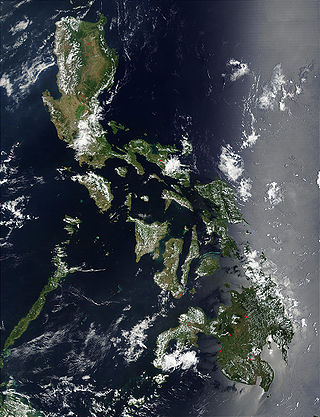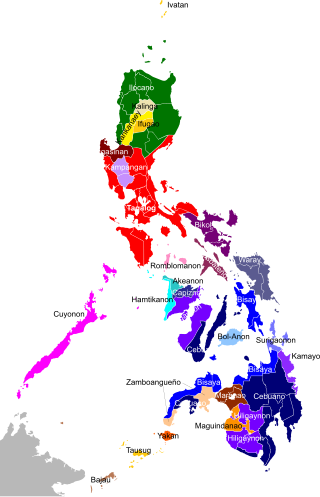
The Philippines is an archipelago that comprises 7,641 islands with a total land area of 300,000 square kilometers (115,831 sq mi).country]]. The eleven largest islands contain 95% of the total land area. The largest of these islands is Luzon at about 105,000 square kilometers (40,541 sq mi). The next largest island is Mindanao at about 95,000 square kilometers (36,680 sq mi). The archipelago is around 800 kilometers (500 mi) from the Asian mainland and is located between Taiwan and Borneo.

In the Philippines, provinces are one of its primary political and administrative divisions. There are 82 provinces at present, which are further subdivided into component cities and municipalities. The local government units in the National Capital Region, as well as independent cities, are independent of any provincial government. Each province is governed by an elected legislature called the Sangguniang Panlalawigan and an elected governor.

The Philippines is inhabited by more than 182 ethnolinguistic groups, many of which are classified as "Indigenous Peoples" under the country's Indigenous Peoples' Rights Act of 1997. Traditionally-Muslim peoples from the southernmost island group of Mindanao are usually categorized together as Moro peoples, whether they are classified as Indigenous peoples or not. About 142 are classified as non-Muslim Indigenous People groups, and about 19 ethnolinguistic groups are classified as neither indigenous nor moro. Various migrant groups have also had a significant presence throughout the country's history.

Telephone numbers in the Philippines follow an open telephone numbering plan and an open dial plan. Both plans are regulated by the National Telecommunications Commission, an attached agency under the Department of Information and Communications Technology (DICT).

The Christian And Missionary Alliance Churches of the Philippines (CAMACOP) is a Christian evangelical group in the Philippines that originated from The Christian and Missionary Alliance (C&MA). It is one of the largest evangelical groups in the Philippines.

The following outline is provided as an overview of and topical guide to the Philippines:

The Spanish forts of the Philippines, or fuerzas, are strongholds constructed by Filipinos and Spaniards primarily for protection against local and foreign aggressors during the Spanish colonial period, and during the subsequent American and Japanese occupations. Many are badly damaged, either due to old age or past conflicts. Currently, there are initiatives for restorations of all forts, beginning when the Baluarte Luna of La Union and the Intramuros of Manila were restored in the 2010s. In 2013, a typhoon and earthquake hit Central Visayas and damaged numerous Spanish fortifications, leading to the largest restoration activity for fortifications in Philippine history.

The Sama–Bajaw languages are a well-established group of languages spoken by the Sama-Bajau peoples of the Philippines, Indonesia and Malaysia.

There are a total of 77 retiring and term-limited congressmen after the 14th Congress. Congressmen who had served three consecutive terms are prohibited from running in the elections; they may run again in 2013 for the 16th Congress.
These are independent candidates in the 2013 Philippine House of Representatives elections:
These are term limited and retiring members of the House of Representatives of the Philippines during the 16th Congress of the Philippines. Term limited members are prohibited from running in the 2016 elections; they may run for any other positions, or may wait until the 2016 elections.

Regional TV Weekend News is a Philippine television news broadcasting show broadcast by GMA News TV, GMA Network and GTV. It premiered on July 27, 2019, on GMA News TV and on March 21, 2020, on GMA Network. The show concluded on GMA Network on May 2, 2020. The show aired its last episode on July 24, 2021, to give way for Regional TV News.
COVID-19 community quarantines in the Philippines were series of stay-at-home orders and cordon sanitaire measures that have been implemented by the government of the Philippines through its Inter-Agency Task Force for the Management of Emerging Infectious Diseases (IATF-EID).
Local elections in the Philippines took place on May 9, 2022. These were conducted together with the 2022 general election for national positions. All elected positions above the barangay (village) level but below the regional level were disputed. The following 18,180 positions will be disputed:
This page is based on this
Wikipedia article Text is available under the
CC BY-SA 4.0 license; additional terms may apply.
Images, videos and audio are available under their respective licenses.










